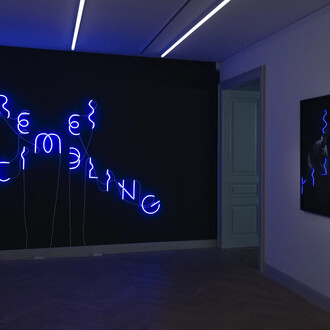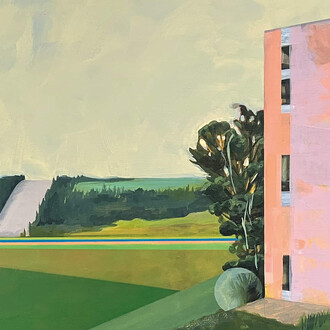Gagosian is pleased to present A line (a)round an idea, an exhibition of black-and-white works on paper by Richard Artschwager, Georg Baselitz, Bruce Conner, Willem de Kooning, Günther Förg, Sam Francis, Keith Haring, Christine Hiebert, Hans Hofmann, Franz Kline, Brice Marden, Henri Matisse, Robert Motherwell, Richard Serra, Cy Twombly, Andy Warhol, Tom Wesselmann, and others.
In the act of drawing, an artist physically experiences the full potential of the most direct gestures. The works included in A line (a)round an idea reveal the ways in which modern and contemporary artists have explored the clarity and activating power of the simple line, mark, splatter, or stroke.
Contrasting with the bold gestural abstractions of Francis, Kline, Motherwell, and Serra, the figurative works in the exhibition use the immediacy of drawing to map the contours of the human body—from de Kooning’s Woman (c. 1965), a standing nude that appears to dissolve into hazy charcoal curves, to the visceral, inky drips of Baselitz’s inverted figure from 2015.
Drawings by Matisse and Wesselmann unite the graphic function of the line with the traditional subjects of the still life or interior scene. The former outlines a bundle of round fruits, and the latter depicts a woman’s face in profile framed by the edges of a pillow, flowers, and a table. Rather than create illusions of volume via light and shading, both artists communicate their subjects using lines alone. Adopting a similar approach, Warhol shows a hammer and sickle leaning against a wall, objects freighted with political meaning yet rendered in an irreverent freehand verging on abstraction. And Hofmann, in Drawing for Fruit Bowl III (1950), rebels against the picture plane itself, breaking up the composition into cubist fragments.
From the Abstract Expressionists’ unhesitating liquid gestures to Conner’s Rorschach inkblots, Hiebert’s meandering marks, and Marden’s mixture of graphite and beeswax, A line (a)round an idea captures a wide array of subjects and attitudes while tracing subtle shifts in artistic creation itself. Across time, media, and genre, each artist inscribes fleeting ideas and sensations into material permanence.
















![Karel Appel, Le coq furieux [The furious rooster] (detail), 1952. Courtesy of Kunstmuseum Bern](http://media.meer.com/attachments/de322f88933729d2014dc4e021d4a6694046a744/store/fill/330/330/c26a6c5ef5e2ed397d4a2e9bc00ac739c40ba8384f45f9ce1ed85adba600/Karel-Appel-Le-coq-furieux-The-furious-rooster-detail-1952-Courtesy-of-Kunstmuseum-Bern.jpg)